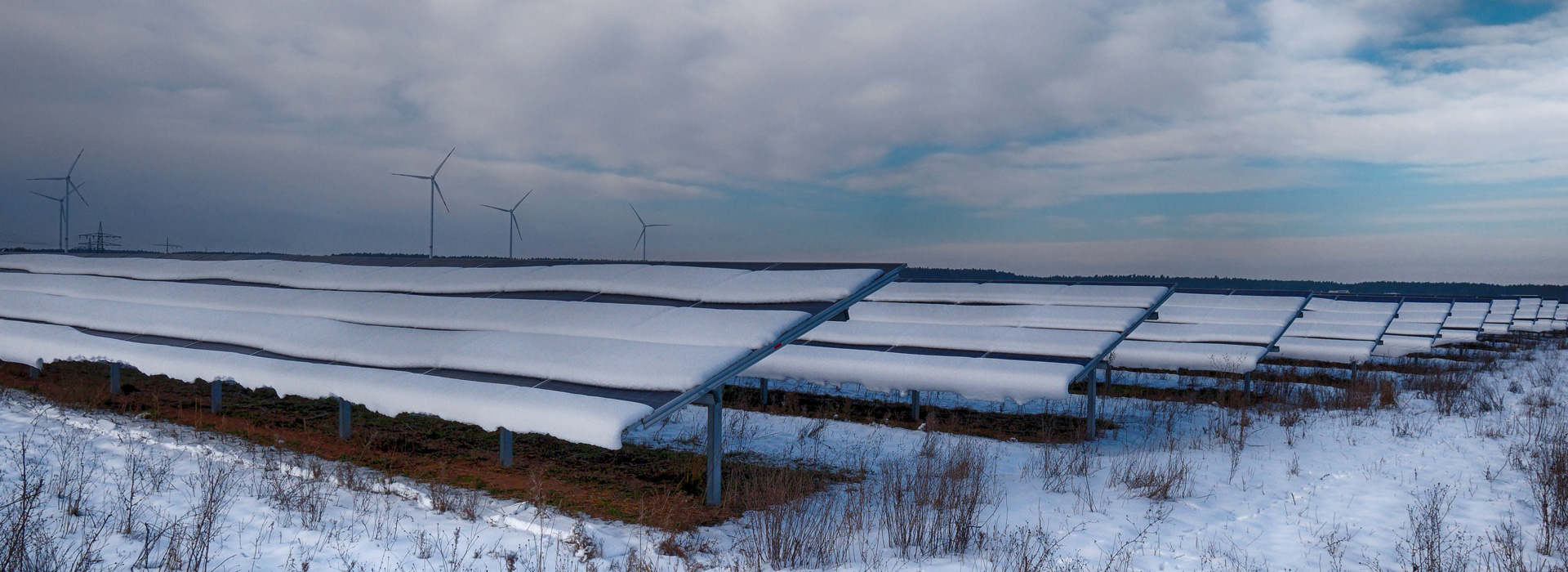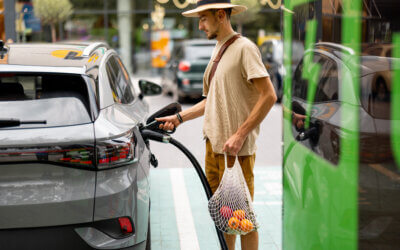The advantages of renewable energy have been known for a very long time – such as cleaner air, lower carbon emissions, the conservation of natural resources, and substantial long-term savings.
In America, we’re embracing renewables at a remarkable rate, with clean energy now outpacing coal for the first time in the modern era. Wind farms, solar panels, hydropower stations, and even large-scale batteries are appearing all over the country in an effort to decarbonize our electricity and transport networks.
But just like any other forms of technology, it’s also important to recognize the disadvantages of renewable energy if we want to successfully create an emission-free world. In fact, only by understanding its limitations can we improve the existing technology, create new solutions, and meet our energy needs all while helping the environment.
So, let’s explore the advantages and disadvantages of renewable energy, discover more about its unique benefits, and focus on the challenges we still need to overcome.
The Advantages of Renewable Energy Resources
1) A Fuel Supply That Never Runs Out
As the name suggests, renewable energy is created from sources that naturally replenish themselves – such as sunlight, wind, water, biomass, and even geothermal (underground) heat.
Unlike the mining of coal, oil, and natural gas – which requires extensive networks of heavy machinery, processing stations, pipelines, and transportation – renewables convert natural resources directly into electricity. And while many fossil fuels are becoming harder and more expensive to source – resulting in the destruction of natural habitats and significant financial losses – renewable energy never runs out.
2) Zero Carbon Emissions
Perhaps the most significant benefit of renewable energy is that there are no greenhouse gasses or other pollutants created during the process. Whereas coal power plants create around 2.2 pounds of CO2 for every kilowatt-hour of electricity – solar panels and wind turbines create none at all.
As we race to decarbonize our world and embrace energy sources that don’t contribute to global warming, renewables are helping to provide us with emission-free energy, heat, cars, and even air travel.
3) Cleaner Air and Water
Burning fossil fuels to generate electricity does far more than warm the climate; it also contaminates the air we breathe and the water we drink.
Coal power stations, for example, release high volumes of carbon dioxide (CO2) and nitrous oxide (N2O) directly into the atmosphere – two of the most potent greenhouse gasses. But in addition, they also emit mercury, lead, sulfur dioxide, particulates, and dangerous metals – which can cause a host of health problems ranging from breathing difficulties to premature death. Fossil fuel electricity can also contaminate waterways, both from air pollution that falls to the ground during rain, and waste materials created during the production process.
On the other hand, renewable energy creates no pollution, waste, or contamination risks to air and water. And while the COVID-19 lockdowns gave us a glimpse of clear skies in major cities all over the world, renewable energy has the potential to make clean air the new normal.
4) A Cheaper Form of Electricity
With the rapid growth of renewable energy over the last ten years, solar and wind power are now the cheapest sources of electricity in many parts of the world. In the United Arab Emirates – an area well-known for its abundant land and sunny weather – a new sun farm recently secured the world’s lowest price of solar energy at just 1.35c per kilowatt-hour.
The dramatic decline in solar and wind costs has even led to many fossil fuel multinationals – including the six major oil companies – to focus on renewable energy investment instead. And whereas green energy was once a “clean-but-expensive” alternative – it’s now helping to reduce energy bills for people all over the world.
5) Renewable Energy Creates New Jobs
With an increasing focus on global warming and many governments setting ambitious carbon-reduction goals, one of the surprising renewable energy advantages is that it has quickly become a major source of new job growth.
In America, renewables now employ three times as many people as fossil-fuels, and the Bureau of Statistics predicts that wind turbine technicians and solar panel installers will be some of the fastest-growing jobs over the next decade. And in addition to keeping millions of people in work over extended periods – many renewable energy jobs also pay above-average wages.
The Disadvantages of Renewable Energy
1) Higher Capital Costs
While renewable energy systems need no fuel and can deliver substantial long-term savings, their up-front costs can still be prohibitive. For example, installing a solar system on your home may cost $10,000 – $20,000, and despite your desire to power your house with renewable energy, the price tag may push it out of reach.
On a larger scale, wind farms, solar parks, and hydropower stations require significant investment, land, and electrical infrastructure, resulting in some projects being delayed, altered, or even canceled.
Thankfully, renewable energy sources such as solar panels and wind turbines have continued to fall in cost due to growing economies of scale, improved manufacturing, and the popularity of renewable energy certificates.
2) Electricity Production Can Be Unreliable
Renewable energy systems rely on natural resources such as sunlight, wind, and water, and therefore, their electricity generation can be as unpredictable as the weather. Solar panels lose efficiency on cloudy days, wind turbines aren’t effective in calm weather, and hydropower systems need consistent snow and rainfall to maintain reliable production.
At the same time, when renewable systems produce too much energy, they risk overloading the grid and causing major problems for network operators. Australia, the country with the most solar panels per capita, is considering new export measures to prevent too much solar power from entering the grid on sunny days – and even charging system owners to do so.
One of the advantages of non-renewable energy – such as the output from a coal power station – is a consistent flow of energy that can be ramped up and down. But the intermittency of renewables, combined with their accelerating deployment, requires many expensive infrastructure upgrades to maintain reliable supply – which are ultimately paid for by the end-users.
3) Energy Storage Is a Challenge
Due to the intermittent nature of renewables, they need forms of energy storage to capture and release electricity in a consistent and controlled way.
Utility-scale batteries have gained significant momentum in recent years, such as the world’s largest system that recently came online in California. However, despite falling costs, storage technology is still relatively expensive and there are some lingering questions regarding its reliability and lifespan.
Thankfully, many of the existing systems in operation are generating promising results. Tesla’s “big battery” in South Australia – the largest of its kind when built – has delivered significant savings to local customers while keeping the lights on during grid interruptions. And with the accelerating growth of renewables all over the world, it seems that large-scale energy storage is set to follow a similar path.
4) It’s Impacted by Environmental Conditions
The efficiency of renewable energy systems also depends on their location and surrounding environment. For example, wind turbines are only effective in large, open areas with strong and consistent wind, which limits their viability to specific regions.
And while solar panels generate some electricity even on cloudy days, they are most productive in locations with consistently bright and sunny climates. In America, a solar system in Nevada is significantly more efficient than one in Minnesota, meaning that areas with fewer sunlight hours need more panels to generate the same amount of power.
5) Renewables Still Have a Carbon Footprint
While solar panels and wind turbines produce no carbon emissions as they make energy – their manufacturing, transport, and installation still creates a carbon footprint. Renewable energy components are typically made in large factories that consume high amounts of electricity, in addition to the diesel and gasoline vehicles needed for their transport and installation.
There are, however, two important points to note:
- Unlike fossil fuel systems, renewables have an “energy payback period”, which is the amount of time needed to produce the same amount of electricity used in their life cycle. Solar panels generally recoup their embodied energy within 1-3 years, while a large wind turbine can eliminate its carbon footprint within just six months.
- As we deploy more renewables, electric vehicles become more common, and the percentage of clean energy in the grid increases, the carbon footprint of manufacturing renewable energy components will continue to shrink.
Thankfully, there’s also growing emphasis on recycling solar panels and wind turbines in an effort to minimize waste, save energy, and reduce the demand for raw materials.
Renewable Energy Has Its Challenges, but There’s a Huge Upside
Despite some existing limitations and challenges, it’s clear that renewables will one day supply all of our homes, businesses, and vehicles with emission-free energy.
And while it’s unlikely that a single energy source will ever meet all of our needs, the combination of solar, wind, biomass, geothermal, hydro, and battery storage has the potential to power our entire world without creating any pollutants or greenhouse gasses.
If you’re looking to make the switch to renewable energy but it’s beyond your financial reach, there are other ways you can achieve a positive environmental result:
- Request 100% green energy from your power company
- Purchase renewable energy credits (RECs) to offset your electricity use
- If you have a large property, you can host a wind turbine or solar array on your vacant land
- Invest in a community solar farm in your local area
But most importantly, we should remember that despite the many advantages of renewable energy, the best way to lower our carbon emissions is to reduce our electricity and gas consumption in the first place.
Despite some challenges, renewable energy’s advantages far outweigh its drawbacks, making it a vital part of our clean energy future. By understanding both the benefits and limitations of renewables, we can better innovate, invest, and adopt solutions that reduce carbon emissions and protect the planet.
If switching to renewables isn’t yet feasible for you, consider options like requesting green energy from your utility, purchasing renewable energy credits, or supporting community solar projects. Most importantly, remember that reducing overall energy consumption remains the most effective way to lower emissions.
Together, by combining smarter energy use with cleaner sources, we can accelerate the transition to an emission-free world—creating a healthier environment and a more sustainable future for all.
Brought to you by terrapass.com







